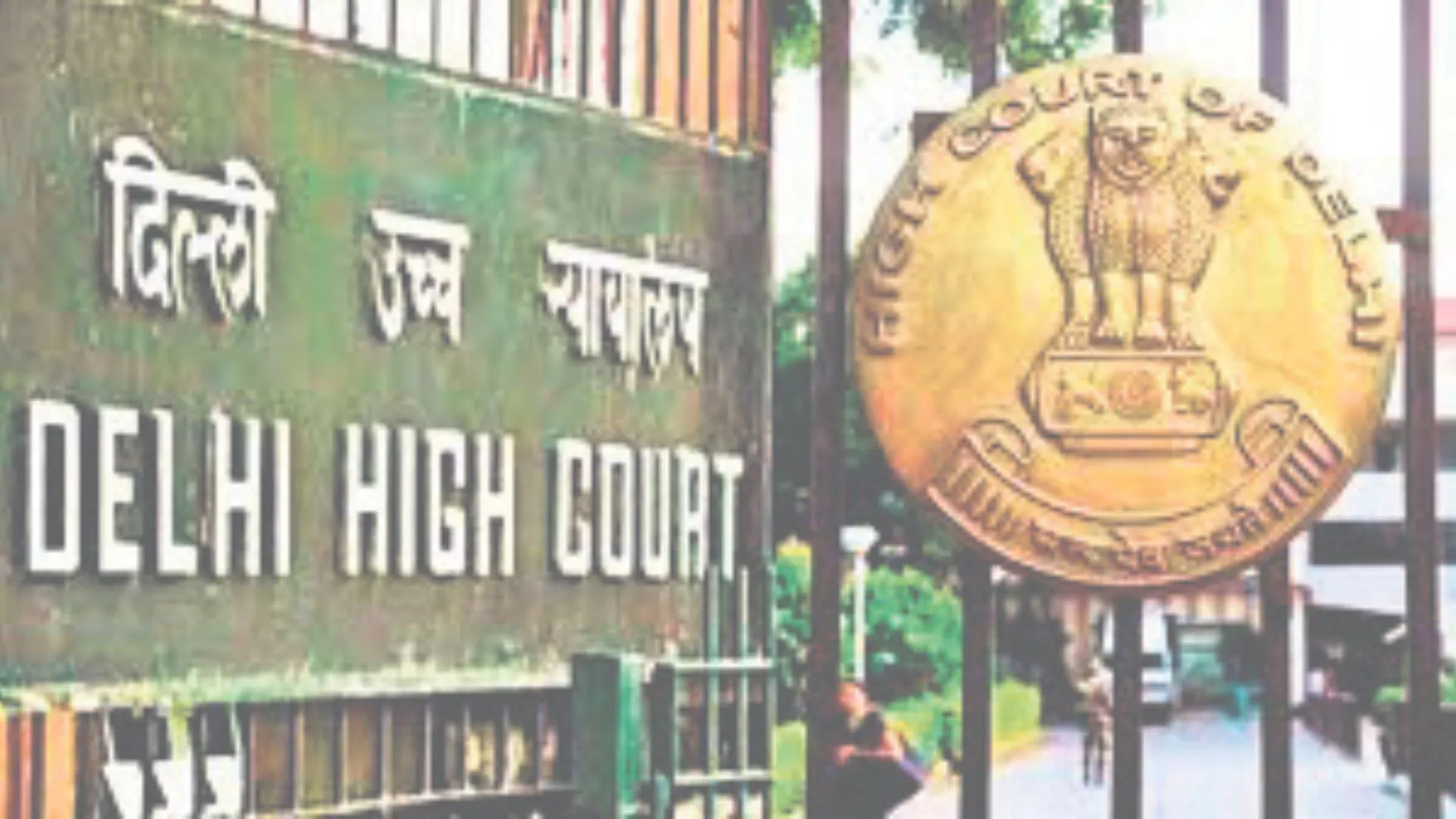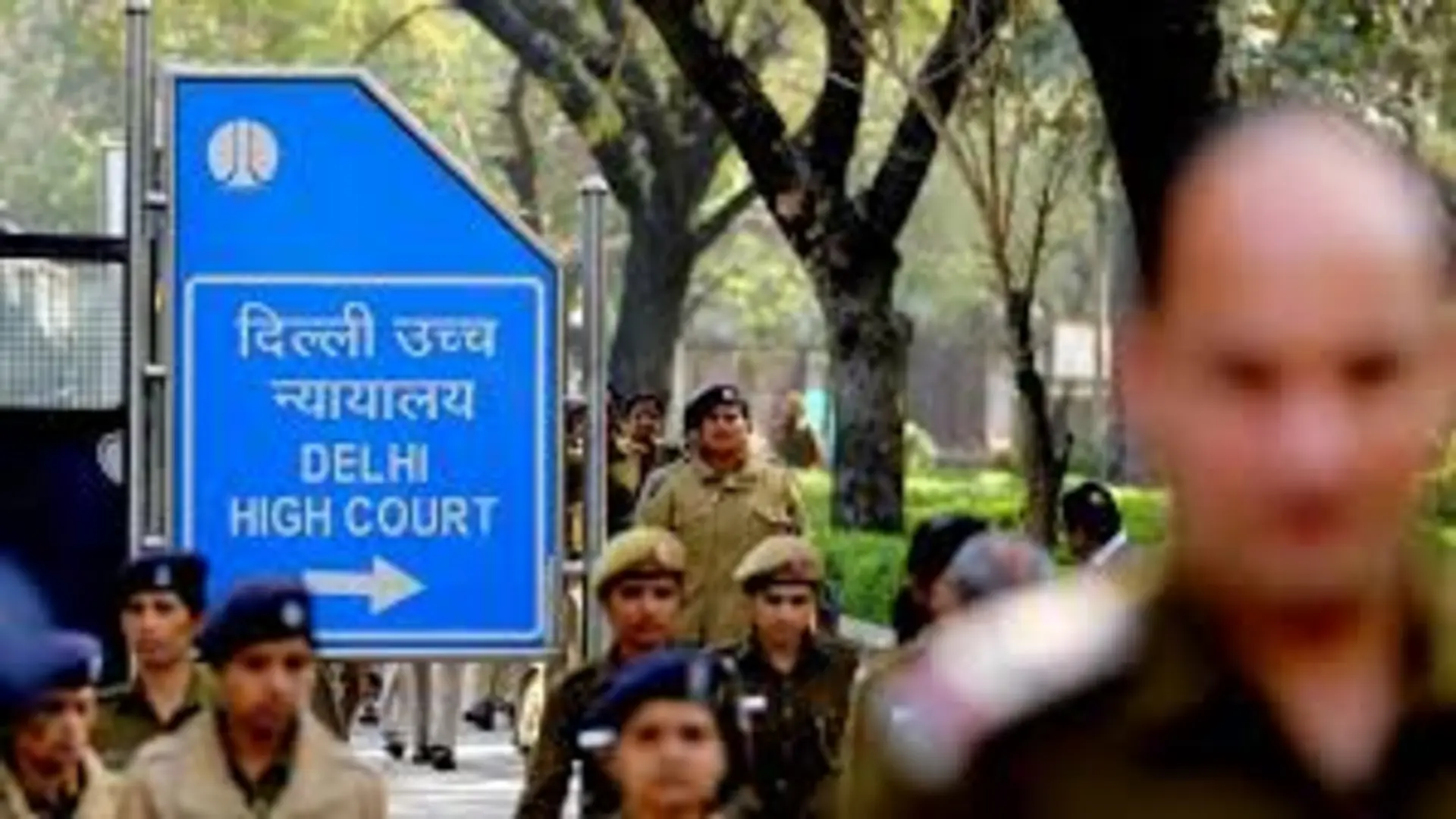BACKGROUND
Let me first of all start by recalling what Section 8 of the Evidence Act envisages before dwelling in detail on the importance of motive, preparation and previous or subsequent conduct which any court or judge has to take into account before according conviction or acquittal to any person accused of any offence. Section 8 of the Evidence Act very clearly prescribes that, “Any fact is relevant which shows or constitutes a motive or preparation for any act in issue or relevant fact. The conduct of any party, or of any agent to any party, to any suit, or proceeding, in reference to such suit or proceeding , or in reference to any fact in issue therein or relevant thereto, and the conduct of any person an offence against whom is the subject of any proceeding , is relevant, if such conduct influences or is influenced by any fact in issue or relevant fact , and whether it was previous or subsequent thereto.
Explanation 1 – The word “conduct” in this section does not include statements, unless those statements, accompany and explain acts other than statements, but this explanation is not to affect the relevancy of statements under any other section of this Act .
Explanation 2 – When the conduct of any person is relevant, any statement made to him or in his presence and hearing, which affects such conduct is relevant.”
IMPORTANCE OF MOTIVE
There can be no gainsaying the fact that whenever any crime is committed, the court always takes into account the motive of the offender committing the crime , the preparation made in committing the crime and last but not the least , the previous or subsequent conduct of the offender as explained in Section 8 of the Evidence Act. First of all, let us deal with motive. No act can be done by anyone without a motive. There is always a motive behind every act and it is very hard for someone to do something without a motive.
It is motive which propels and acts as a catalyst responsible for any act being committed. Therefore, its importance in analyzing the real reason behind any offender committing any crime can hardly be overstated. Many difficult cases have been solved by the courts by evaluating motive and correlating it with the facts and circumstances of those cases. Therefore, its importance in determining the final outcome in any given criminal case can hardly be overemphasized.
This explains why the Supreme Court held in State of UP v Babu Ram, AIR 2000 SC 1735 that motive is relevant factor in all criminal cases whether based on testimony of eye witnesses or circumstantial evidence. In a recent landmark case titled Bhagwan Das v State (NCT) of Delhi, AIR 2011 SC 3690, which is a case of an honour killing where the accused father had killed his daughter, the motive of saving the family honour was held by the Supreme Court to be relevant. Similarly, in another recent case – Chunni Lal v State of Uttar Pradesh, AIR 2010 SC 2467, it was held by the Supreme Court that motive of taking step to seek revenge and taking away the property of the deceased was sufficient to convict the accused.
Winfield in his Law of Tort ( 7th Edition ) on page 54 points out that motive signifies the reason for the conduct. Prof Wigmore had pointed out that, “It is always possible that the necessary emotion ( i.e., motive ) may be undiscoverable and thus the failure to discover it, does not signify its non-existence.” In Webster’s Dictionary, it is pointed out that motive implies an emotion or desire operating on the will and causing it to act.
We can thus say in other words that motive symbolises an emotion or desire which plays the most key role in propelling a person to do a particular act in the manner he/she wants to do it . Needless to say, this alone explains why motive is considered so important in any crime committed and unearths the real reason behind the committing of a crime. The Supreme Court rightly observed in Shreekantiah v State of Bombay, 1955 SCJ 233 that, “It has to be kept in mind that a person does not commit a grave illegal act which might expose him to prosecution and possible disgrace unless he is prompted by some strong motive.
Motive acquires great significance when there is no direct evidence and the case rests entirely on circumstantial evidence. In Queen v Sorob Roy, 5 WR ( Cr ) 28 as also in Queen v Bahar Ali Khan , 15 WR ( Cr ) 46, it was held that to establish liability whether civil or criminal, motive is generally irrelevant but an enquiry into motive is often of great importance , particularly in cases of circumstantial evidence . The Supreme Court in Nath Uni v State of Bihar , 1998 ( 9 ) SCC 238 : AIR SCW 1158 , held categorically that, “Question of motive is of great importance in circumstantial evidence . When motive is absent the court must consider the said fact as a circumstance in favour of the accused. In other words, motive is the emotion which impels a man to do a particular act and such impelling cause need not necessarily be proportionately grave to do grave crimes.”
CAN A CRIMINAL ACT BE PRESUMED WITHOUT MOTIVE?
Now the question arises that, “Can no criminal act be presumed unless motive is proved?” The answer is a criminal act can be presumed even if motive is not proved and if the other chain of events prove the commission of a criminal act. It is not mandatory that motive must exist to prove a criminal act nor is it mandatory that motive must be proved before a criminal act is presumed.
In this context, it would be apposite to mention here that in Yunis alias Kariya v State of Madhya Pradesh , AIR 2003 SC 539 , it was held by the Supreme Court that ocular evidence ( eye witness ) is very clear and continuing . Role of the accused person in time stands established . Failure to prove motive for the crime has no consequence . Similarly in Anil Yadav v State of Bihar , 1992 ( 1 ) Crimes 282 , it was held that motive is not a sine qua non for the success of prosecution case if the evidence is convincing and not open to reasonable doubt . Also , in Thaman Kumar v State of Union Territory of Chandigarh , AIR 2003 SC 3975 , it was held by the Supreme Court that , “Where the ocular evidence is found to be trustworthy and reliable and finds corroboration from medical evidence , the accused can be safely convicted even if the motive for the commission of the crime has not been proved.”
Let me point out here that it was held in Ranganayaki v State, AIR 2005 SC 418 that, “Though it is a sound proposition that every criminal act is done with a motive, it is unsound to suggest that no such criminal act can be presumed unless motive is proved .” Let me also point out here that in Gurcharan Singh v State of Punjab, AIR 1956 SC 460, the Supreme Court has observed that, “When the positive ( direct ) evidence against the accused is clear , cogent and reliable , the motive is of no importance .” We also cannot afford to miss out what the Supreme Court held in the case of Atley v State of UP , AIR 1955 SC 807 that , “Where there is clear proof of motive for the crime , that lends additional support to the finding of the court that the accused was guilty but the absence of clear proof of the motive does not necessarily lead to the contrary conclusion. The absence of proof of motive has this effect only, namely that the other evidence bearing on the guilt of the accused had to be very closely examined.”
In yet another landmark case Natha Singh v Emperor, AIR 1946 PC 187, the motive for the commission of murder of one Kamail Singh by the accused Natha Singh was that the deceased knew that Natha Singh had earlier committed the murder of Bhan Singh and that the deceased was extorting money from Natha Singh by threatening to disclose that fact to the police. Holding clearly that the previous murder by Natha Singh and the attempts at blackmail by Kamail Singh proved the motive for the offence, the Supreme Court held very categorically that, “Proof of motive or inducement for the commission of the offence is not necessary when there is clear evidence that a person has committed an offence. When evidence connecting the accused with the commission of the crime is weak, motive can hardly make for the weakness of the prosecution case. If prosecution case is convincing beyond reasonable doubt , it is not necessary for the prosecution to prove motive or that motive was adequate.”
Thus we can safely infer from this landmark ruling that where there is clear proof of guilty act which stands established beyond a straw of doubt, proof of motive hardly matters and is just superfluous. On the contrary, where there is just no proof of guilty act, the proof of motive is of no significance! In other words, motive alone is meaningless unless accompanied by proof of guilty act .
Thus, we can also safely draw the ineluctable conclusion from this above discussion that no person can be convicted on the basis of motive alone unless there is some concrete proof which establishes the guilt of the person concerned in an offence ! Also , motive alone without proof of any kind to establish the guilt of a person in the commission of any offence is irrelevant and meaningless and pales into insignificance . This alone explains that why the Supreme Court in Punjab v Sucha Singh, AIR 2003 SC 1471 minced no words in stating unambiguously that, “Thus, motive, however strong it might be, cannot take the place of proof .”
MOTIVE AND INTENTION
We see very often motive being equated with intention which is totally wrong as the two are totally distinct and signify two different things even though they appear to be similar. It is pertinent to understand the difference between the two terms – motive and intention. Sydney L Phipson points out in his Law of Evidence, 10th edition on page 189 and para 426 that , “Intention is an act of the will directing an act or deliberate omission . Motive is the reason which prompts the intention.”
Let me say here that motive differs from intention in that the intention refers to the immediate consequences that emanates from any particular act whereas motive refers to the ultimate purpose that the doer keeps in mind while doing any particular act . Let me also say here that an act may be done with bad intention but good motive. I will give a very practical example here to convey logically what I have just said . A person plans to steal bread from a shop in order to save the life of a hungry man . The intention of the person is to steal which is a criminal act but the motive of the same person is to save the life of a hungry man and is therefore good which can never be termed criminal from any angle.
While craving for my esteemed readers exclusive indulgence, let me bring to their kind notice the following key differences between motive and intention which are as follows : –
1. Motive signifies a pure mental exercise which impels a man to do some particular act whereas intention is the purpose or design with which an act is done.
2. The ulterior object of the crime is motive whereas the immediate object of the crime is intention.
3. Motive is much wider than intention whereas intention is much narrower and is used in a particular sense.
4. Motive may serve as an indicator to the intention but intention usually do not serve as an indicator to motive.
5. Motive is the prior and initial stage that prompts a person to form an intention whereas intention is a later stage in which a person is propelled into doing something.
6. Last but not the least, previous conduct which includes threats , litigations , altercations etc are relevant to show motive whereas previous conduct are not relevant to establish intention.
Having said this, I must also add here that if there is no motive and intention to commit a crime an accused cannot be convicted for the offence . In this context , let me point out that the Supreme Court in Manjeet Singh v Satte of Himachal Pradesh 2014 ( 2 ) Crimes 287 ( SC ) held that in absence of motive and intention to kill , accused cannot be convicted under Section 302 of IPC.
PREPARATION
Having discussed in detail about motive, let me now shift my focus to preparation which as we can read from Section 8 is mentioned next to motive. First and foremost, let me say here that preparation is the initial stage for committing any crime and it consists of gathering together all the essential means which are required for perpetrating any offence . According to Sir Henry Maine , “Preparation consists in devising or arranging the means or measures necessary for the commission of the offence.”
Preparation itself is not punishable unless and until it is carried out or executed. But there are certain crimes where preparation itself is punishable . As for instance , Section 122 of the IPC punishes the collecting of arms etc with intention of waging war against the Government of India . It very clearly says that , “Whoever collects men , arms or ammunition or otherwise prepares to wage war with the intention of either waging or being prepared to wage war against the Government of India , shall be punished with imprisonment for life or imprisonment of either description for a term not exceeding ten years and shall also be liable to fine.”
Similarly Section 399 of the IPC envisages punishment for making preparation to commit dacoity . It states that , “Whoever makes, any preparation for committing dacoity , shall be punished with rigorous imprisonment for a term which may extend to ten years , and shall also be liable to fine .” Also , let me tell my readers here that Section 125 of Prevention of Communal and Targeted Violence ( Access to Justice and Reparations ) Bill , 2011 makes a person punishable if he makes “preparation to do or omits to do anything which constitutes an offence punishable under this Act and from the circumstances of the case it may be reasonably inferred that he or she was determined to carry out his or her intention to commit the offence but had been prevented by circumstances independent of his or her will .” But this is yet to come into force and become an Act.
It must also be disclosed here that apart from these, preparation usually is itself not punishable unless the offender moves a step ahead and commits an attempt towards the commission of an offence . As for instance , attempt to murder and attempt to suicide are punishable under Sections 307 and 309 of the IPC respectively . After attempt comes the final stage and that is the completion or commission of an offence .
While craving for my esteemed readers exclusive indulgence , let me bring to their kind notice the following key differences between motive and preparation which I personally consider very essential and which are as follows : –
1. Motive is the starting point of an action while preparation is an act of doing something in pursuance of the motive .
2. Motive is a purely mental exercise which is done prior to the commission of an act while in preparation , let me point out here some overt act is done with a view to translate the motive into action .
3. Motive impels a person to do a particular act but the point to note here is that motive cannot by itself be a cause for sustaining a criminal charge even though proof of motive lends credence to the criminal charge levelled against the concerned person but preparation lends assurance pertaining to some actual occurrence of a crime and by itself can be a cause for sustaining conviction as we see under Section 122 and 399 of the IPC .
CONDUCT
The court has to take into account most seriously both the previous and subsequent conduct of the accused before drawing any conclusion regarding the guilt or innocence of the accused and very rightly so . It is by analyzing carefully the conduct of the accused both previous and subsequent that the court draws its own logical inference. Therefore, the role of conduct and importance of its evidentiary value can never be overlooked or underestimated by any court in determining the conviction or acquittal of the accused .
It would be imperative here to elaborate a few relevant case laws which will shed light on the importance of conduct and the importance attached to it in evaluating its evidentiary value . In RM Malkani v State of Maharashtra , AIR 1973 SC 157, conversation over telephone for settling details for passing bribe-money was recorded by secret instruments. This was held by Apex Court to be evidence of conduct. The Court cited from R v Leatham , ( 1861 ) 8 Cox CC 198 wherein it was held that, “It matters not how you get it, if you steal it even, it would be admissible in evidence.”
PREVIOUS AND SUBSEQUENT CONDUCT
In any case where a crime has been committed, the court has to take into account both the previous and subsequent conduct of the accused pertaining to the commission of the crime. In certain cases the previous conduct of the accused throws light on whether the accused is innocent or guilty whereas in some cases it is the subsequent conduct that becomes very important in determining the innocence or guilt of the accused . So it is the bounden duty of all the concerned courts to analyse carefully both the previous and subsequent conduct of the accused before drawing any definite conclusions.
As for instance, in Basanti v State of UP, AIR 1987 SC 1572, the conduct of the accused women in telling the villagers including her brother-in-law that the deceased, whose dead body was recovered from a place of concealment, had left the village and had not returned was held by the Supreme Court to be relevant at her trial for murder. Also, in yet another case titled Khalil Khan v State of MP, AIR 2003 SC 4670, the fact that the accused involved in a serious crime like murder would still be wearing blood-stained clothes even four days after the incident, was held by the Supreme Court to be opposed to normal human conduct. Hence, it is extremely difficult to believe in the guilt of such a person. The subsequent conduct of the accused in still roaming around in blood-stained clothes even four days after the murder raises serious questions about his being involved in murder because no murderer will exhibit such a strange conduct and will run away and promptly wash off or throw away his blood-stained clothes at the earliest which we don’t see happening in this case!
Let me also reveal here for my readers benefit that the conduct of the parties etc subsequent to the occurrence of the crime is relevant if it is influenced or linked in any way with the fact in issue. In Aghnoo Nagesia v Bihar, AIR 1966 SC 119, it was held by Apex Court that the filing of an FIR by the accused to divert attention of the police from himself is relevant under Section 8 . Similarly in Krishna Ghosh v West Bengal, AIR 2009 SC 2279 at p. 2282 para 15, the Supreme Court held that, “The fact that the accused is trying to flee from justice or abscond is also relevant as an inculpatory fact. Also, in Ramesh Kumar v State, 2010 CrLJ 85, it was held that the fact that the accused set up a false plea of alibi is relevant under Section 8 as conduct to shield himself.
WHOSE CONDUCT IS ADMISSIBLE?
Now comes the key question : Whose conduct is admissible? Instead of giving my personal views first, let me mention here what the Supreme Court has held in this regard. In Sardul Singh v State of Bombay, AIR 1957 SC 747, it was held by the Supreme Court that, “It must be borne in mind that the conduct of a party alone is admissible. The conduct of a person who is not a party to the suit or proceeding is not admissible.” The conduct of a conspirator who was dead and so not an accused at the trial was held inadmissible.
In Deshraj Sharma v State, AIR 1951 Punjab 14, the Punjab and Haryana High Court held that the conduct of a man is admissible only against him . The conduct of one accused is not relevant against a co-accused. I too more or less subscribe to this widely held view that the conduct of the accused himself/herself matters most and is admissible against him/her but in certain circumstances the conduct of those closely connected with the accused also becomes important especially when those connected closely try to shield him/her wrongly or are accomplice in the crime. This alone explains why under Section 133 of the Evidence Act an accomplice is treated as a competent witness against the accused and even his/her uncorroborated testimony can be acted upon and shall not be considered illegal merely because it is uncorroborated.
CONCLUSION
Before winding up, let me say this with some measure of confidence that motive , preparation and previous or subsequent conduct play a great role in the committing of any crime . This alone explains that why courts always take into account all of these as elaborated in Section 8 of the Evidence Act . Even though the role of one of these may not be much or even negligible but still the court always take great care to convince itself of the same and only after evaluating all the facts before it as also the evidence does it draw any conclusion .
It will not be an exaggeration if I say that motive , preparation and previous or subsequent conduct are always evaluated with great care and caution by the courts even though in some cases motive or preparation or even conduct for that matter may not have played a major role in the commission of a crime and therefore may not be so important in determining the final outcome . Still they are accorded a higher status in determining the final outcome in any given criminal case and are not ignored anyway even though their role may be negligible or even absent . This alone demonstrates their unrivalled importance in determining their final outcome in any given criminal case.
All the three factors cannot be absent at the same time. One or the other plays a key role in any given criminal case and holds the key to nabbing the accused for his/her role in committing any crime! But yes, where the proof clearly point to the guilt of the accused, in such cases even though motive, for instance, may not be proved yet an accused may be convicted and similarly vice versa that is if proof points to the innocence of the accused, he/she may be acquitted! It all depends on the facts and circumstances in any given particular case.
Sanjeev Sirohi, Advocate.























